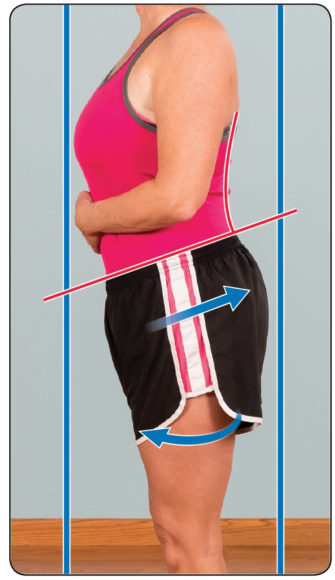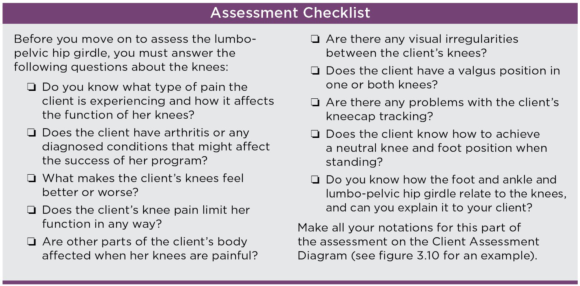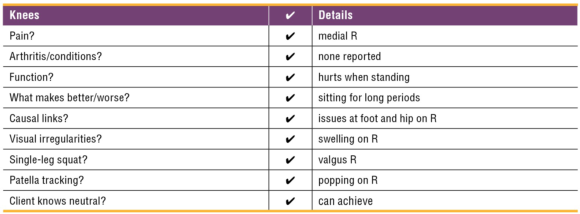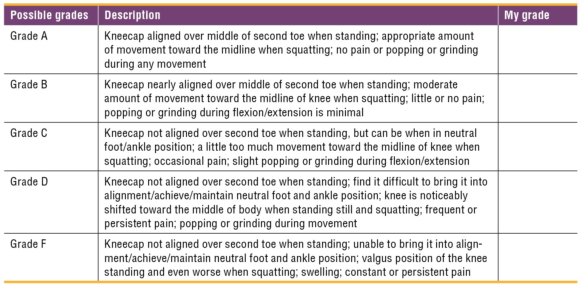The knee is the structure that bridges the feet and ankles and the lumbo-pelvic hip girdle. Therefore, any imbalances or malalignments in the structures above or below it will directly affect how the knee feels and functions. For example, during the single-leg squat assessment, you should have noticed that a valgus knee is usually accompanied by overpronation of the foot and ankle complex. This is because as the foot and ankle collapse toward the midline during overpronation, the lower leg also rotates inward excessively, pulling the knee into a valgus position. This movement of the knee also causes the thighbone to rotate inward, affecting the position of the hip socket (where the upper leg articulates with the pelvis). Because of this change in position of the upper leg and hip socket, the pelvis shifts out of alignment by rotating down and forward. This change in position of the pelvis causes the lower back to arch excessively (see figure 3.9) (Kendall, McCreary, and Provance 2005; Price and Bratcher 2010).

Figure 3.9 Compensations of pelvis caused by excessive inward rotation of upper and lower leg.


Figure 3.10 Sample of completed knee assessment on Client Assessment Diagram.
Review of Key Points
The knee joint is primarily a hinge joint that connects the lower leg and the upper leg. Malalignments or imbalances in the more mobile joints of the feet and ankles or the lumbo-pelvic hip girdle will affect their connection point, the knees.
- The two most common deviations found in the knees are
- problems with side-to-side alignment (e.g., valgus knee position) and
- tracking problems during flexion and extension.
- Apart from instances of acute trauma, knee pain is usually caused by imbalances in the structures above and below the knee joint. Therefore, the overall health and function of the feet and ankles and the lumbo-pelvic hip girdle directly affect the condition of the knees.
- Placing the feet and ankles into a neutral position when standing will most likely bring the knees into proper alignment. Overpronation of the feet and ankles causes the lower and upper leg to rotate too far inward, moving the knee toward the midline.
- When you learn about the types and intensity of physical activity people engage in, you can better understand the amount of stress they place on their knees. Identifying the activities that cause or reduce pain can help you determine what soft tissue structures may be irritated or dysfunctional.
- Popping or grinding noises that occur when a person sits down, stands up, or otherwise flexes and extends the knee suggest tracking problems.
- Record any pertinent information on the Client Assessment Diagram.
Self-Check
The condition of your knees can act as an early warning system for potential musculoskeletal imbalances in the feet and ankles or in the lumbo-pelvic hip girdle. Assess your own knees, and mark the grade you would give yourself on the following knee health report card.
